
This lecture includes the following topics: Debugging, continued. Pointers, continued. Heap. File I/O. Forensics.
- Subject:
- Computer Science
- Material Type:
- Lecture
- Provider:
- Harvard
- Date Added:
- 12/23/2015

This lecture includes the following topics: Debugging, continued. Pointers, continued. Heap. File I/O. Forensics.

This lecture includes the following topics: Debugging, continued. Pointers, continued. Heap. File I/O. Forensics.
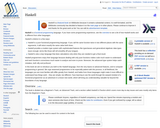
In this book we aim to introduce you both to the Haskell language, from the very basics to advanced features, and to computer programming in general. We urge seasoned programmers to be especially patient with this process. In all likelihood, the languages you are most familiar with differ greatly from Haskell, and habits from those languages might make it more difficult to understand how things work − they are simple, but different. Face learning to see the world through the warped mindset of a functional programmer as an adventure in a brave new world, which will bring you understanding valuable far beyond the boundaries of any language.
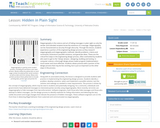
Steganography is the science and art of hiding messages in plain sight so only the sender and intended recipient know the existence of a message. Steganography can be characterized as security through obscurity. Through this lesson, students experience a portion of the engineering design process as they research steganography and steganographic methods; identify problems, criteria and constraints; brainstorm possible solutions; and generate ideas. These are the critical first steps in the engineering design process, often overlooked by students who want to get to the "doing" phases—designing, building and testing. In computer science, a thorough design phase makes program implementation much easier and more effective. Students obtain practice with a portion of the design process that may be less exciting, but is just as important as the other steps in the process.

Lesson that explores security measures (also commonly referred to as controls), specifically, identification, authentication, and authorization. Students will also explore password security.
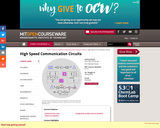
6.776 covers circuit and system level design issues of high speed communication systems, with primary focus being placed on wireless and broadband data link applications. Specific circuit topics include transmission lines, high speed and low noise amplifiers, VCO's, and high speed digital circuits. Specific system topics include frequency synthesizers, clock and data recovery circuits, and GMSK transceivers. In addition to learning analysis skills for the above items, students will gain a significant amount of experience in simulating circuits in SPICE and systems in CppSim (a custom C++ simulator).
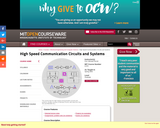
6.976 covers system level issues of high speed communication systems and their impact on circuit requirements, with primary focus being placed on wireless and broadband data link applications. Course topics include: transistor level design techniques for high speed amplifiers, mixers, VCO's, registers and gates, and phase locked loops, and the impact of transmission line effects on circuit designs for narrowband and broadband systems. Finally, behavioral level simulation techniques are presented for phase locked loops and other communication circuits.
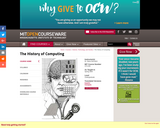
Examines the development of computing techniques and technology in the nineteenth and twentieth centuries, particularly critical evaluation of how the very idea of "computer" changes and evolves over time. Emphasis is on technical innovation, industrial development, social context, and the role of government. Topics include Babbage, Hollerith, differential analyzers, control systems, ENIAC, radar, operations research, computers as scientific instruments, the rise of "computer science," artificial intelligence, personal computers, and networks. Includes class visits by members of the MIT community who have made important historical contributions. This course focuses on one particular aspect of the history of computing: the use of the computer as a scientific instrument. The electronic digital computer was invented to do science, and its applications range from physics to mathematics to biology to the humanities. What has been the impact of computing on the practice of science? Is the computer different from other scientific instruments? Is computer simulation a valid form of scientific experiment? Can computer models be viewed as surrogate theories? How does the computer change the way scientists approach the notions of proof, expertise, and discovery? No comprehensive history of scientific computing has yet been written. This seminar examines scientific articles, participants' memoirs, and works by historians, sociologists, and anthropologists of science to provide multiple perspectives on the use of computers in diverse fields of physical, biological, and social sciences and the humanities. We explore how the computer transformed scientific practice, and how the culture of computing was influenced, in turn, by scientific applications.

A laboratory-based exploration of the principles, techniques, and applications of holography as a 3-D imaging communication medium. Begins with interference and diffraction, and proceeds through laser off-axis holography to white-light "rainbow" and reflection holography. Term project required, with oral presentation and written report. MAS.450 is a laboratory course about holography and holographic imaging. This course teaches holography from a scientific and analytical point of view, moving from interference and diffraction to imaging of single points to the display of three-dimensional images. Using a "hands-on" approach, students explore the underlying physical phenomena that make holograms work, as well as designing laboratory setups to make their own images. The course also teaches mathematical techniques that allow the behavior of holography to be understood, predicted, and harnessed. Holography today brings together the fields of optics, chemistry, computer science, electrical engineering, visualization, three-dimensional display, and human perception in a unique and comprehensive way. As such, MAS.450 offers interesting and useful exposure to a wide range of principles and ideas. As a course satisfying the Institute Laboratory Requirement, MAS.450 teaches about science, scientific research, and the scientific method through observation and exploration, hinting at the excitement that inventors feel before they put their final equations to paper.
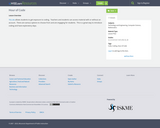
This site allows students to get exposure to coding. Teachers and students can access material with or without an account. There are various options to choose from and are engaging for students. This is a great way to introduce coding and have exploratory days.
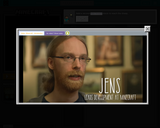
This tutorial is a great first-time view and explanation of coding using javascript drag and drop method. It sets the stage for the though process between connecting events and accomplishing an event. After a 3 minute introduction and demonstration, users are able to get right to it by practicing to code using the drag and drop method.
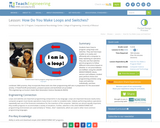
Students learn how to program using loops and switches. They see how loops enable us to easily and efficiently tell a computer to keep repeating an operation. They also see that switches permit programs to follow different instructions based on whether or not preconditions are fulfilled. Using the LEGO MINDSTORMS(TM) NXT robots, sensors and software, student pairs perform three mini programming activities using loops and switches individually, and then combined. With practice, they incorporate these tools into their programming skill sets in preparation for the associated activity. A PowerPoint® presentation, pre/post quizzes and worksheet are provided.

Building on the programming basics learned so far in the unit, students next learn how to program using sensors rather than by specifying exact durations. They start with an examination of algorithms and move to an understanding of conditional commands (until, then), which require the use of wait blocks. Working with the LEGO MINDSTORMS(TM) NXT robots and software, they learn about wait blocks and how to use them in conjunction with move blocks set with unlimited duration. To help with comprehension and prepare them for the associated activity programming challenges, volunteer students act out a maze demo and student groups conclude by programming LEGO robots to navigate a simple maze using wait block programming. A PowerPoint® presentation, a worksheet and pre/post quizzes are provided.
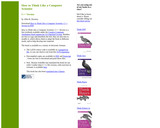
The single most important skill for a computer scientist is problem solving. The goal of this book is to teach you to think like a computer scientist.
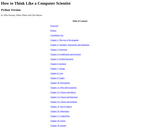
Python is a fun and extremely easy-to-use programming language that has steadily gained in popularity over the last few years. Developed over ten years ago by Guido van Rossum, Python's simple syntax and overall feel is largely derived from ABC, a teaching language that was developed in the 1980's. However, Python was also created to solve real problems and it borrows a wide variety of features from programming languages such as C++, Java, Modula-3, and Scheme. Because of this, one of Python's most remarkable features is its broad appeal to professional software developers, scientists, researchers, artists, and educators. 278 page pdf file.
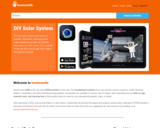
What Is Howtosmile?
Howtosmile is a curated collection of over 4,000 STEM activities available on the web.
These activities are handpicked from science museums, public television stations, universities, and other educational organizations.
The best partAll these resources are accessible to anyone, free of charge1.
DIY Solar System App: Explore Our Solar System
The DIY Solar System app, developed by the creators and contributors of Howtosmile, allows families and educators to explore our solar system from anywhere, anytime.
Available on both the App Store and Google Play, this app provides hands-on activities, interactives, and augmented reality experiences.
You can learn about our solar system in English and Spanish through this engaging app1.
Curated Topic Pages
Starting a new topic for a class or any group of students can be daunting. Howtosmile’s topic pages come to the rescue!
These pages provide curated activities based on educational frameworks, including national standards, big idea lists, popular media content, and concept maps.
Whether you’re teaching energy, climate, life sciences, ocean literacy, astronomy, cooking, health, or the human body, you’ll find relevant resources here.
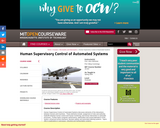
Principles of supervisory control and telerobotics. Different levels of automation are discussed, as well as the allocation of roles and authority between humans and machines. Human-vehicle interface design in highly automated systems. Decision aiding. Tradeoffs between human control and human monitoring. Automated alerting systems and human intervention in automatic operation. Enhanced human interface technologies such as virtual presence. Performance, optimization, and social implications of the human-automation system. Examples from aerospace, ground, and undersea vehicles, robotics, and industrial systems. Human Supervisory Control of Automated Systems discusses elements of the interactions between humans and machines. These elements include: assignment of roles and authority; tradeoffs between human control and human monitoring; and human intervention in automatic processes. Further topics comprise: performance, optimization and social implications of the system; enhanced human interfaces; decision aiding; and automated alterting systems. Topics refer to applications in aerospace, industrial and transportation systems.
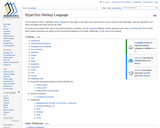
This is a guide to HTML, a standard markup language for web pages. A text editor and a web browser is all you need to create web pages, view your handiwork, and share information with others all over the world.
This book covers simple HTML syntax. For dynamic behavior in websites, see the JavaScript wikibook. Another separate book covers Cascading Style Sheets (CSS) which handle overall look and styling, but the present book addresses CSS briefly. Additionally, XHTML has its own textbook.

Featuring career information from Peter Durnill, Operations Director at EO Johnson

"The FRONT PORCH of IT"! Hear about help desk careers with Jamie Garancis, (TEKsystems); Casey Buchta (West Bend Mutual Insurance); James Haley (Northwestern Mutual) and moderator Jasmin Treske (MKE Tech). The following videos will give you a look into the variety of tech jobs and careers available to you and how you can prepare for them. Watch one - or all - and hear from experts who are doing these jobs today. As you watch the videos, download our workbook at https://bit.ly/MKEWorksheet to help you reflect on each career path and if that might be the right one for you some day!